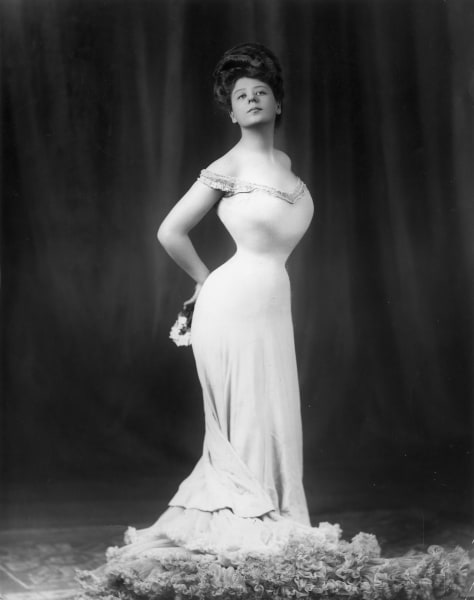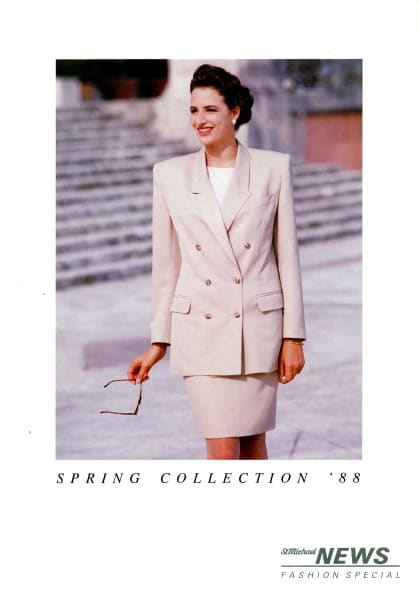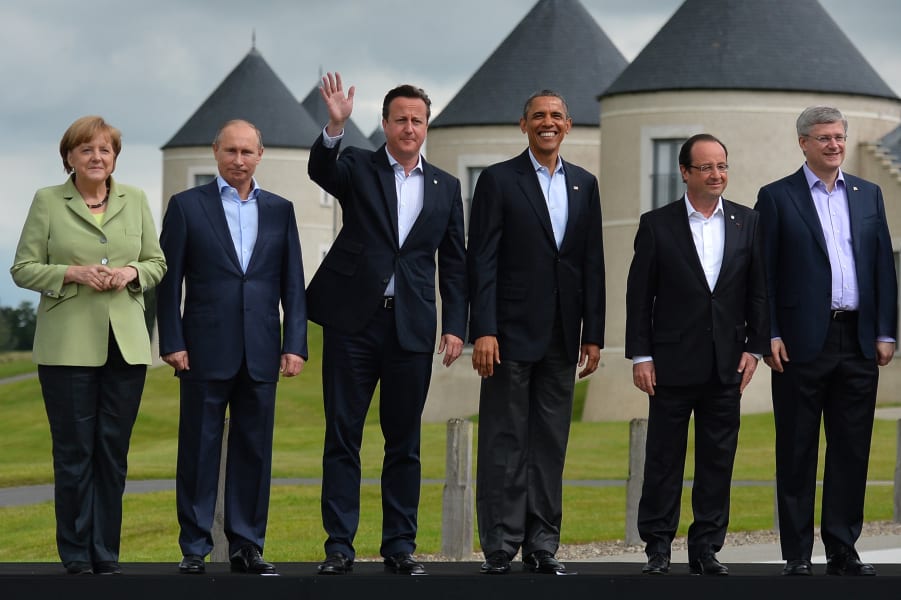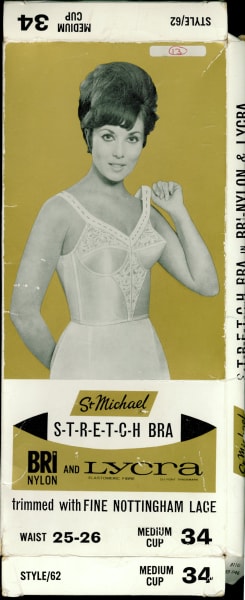Share


1 of 20
A new exhibition at London's Design Museum looks back at how women have used clothes to empower themselves. Danish-born actress Camille Clifford's trademark style was a long, elegant gown wrapped around her tightly corseted, 18-inch waist, pictured here in 1905. W & D Downey/Getty Images/File
A ribbon corset from 1904 also features in the exhibition, called "Women Power Fashion." Courtesy London Design Museum
Vintage packaging from British heritage brand, Marks and Spencer, for nylon brassiere with lace detail, also on show at the museum. Courtesy Marks & Spencer Company Archive
The Suffragettes -- women's rights campaigners around the turn of the 20th century -- were known for their distinctive wide-brimmed hats adorned with flowers. "What's interesting about the suffrage movement is that they didn't necessarily disguise their gender," said co-curator Donna Loveday. "They dressed as Edwardian women, to present themselves as rational and ladylike, when they were portrayed by the media as mannish and vulgar." Hulton Archive/Getty Images/File
French designer Coco Chanel once dismissed her rival, Elsa Schiaparelli, as: "That Italian artist who makes clothes." Indeed, the designer (pictured right, wearing the "trousered skirt") was known for her whimsical, surrealist-inspired pieces, even collaborating with Salvador Dali. Fox Photos/Getty Images/File
An evening gown of silk crêpe, satin-backed, from 1932, appears in the exhibition. Courtesy London Design Museum/Bowes Museum
In 1955, Coco Chanel introduced the quilted leather shoulder bag which allowed "hands-free" carriage, with a long gold chain strap inspired by the key chains of the caretakers of the convent where she was schooled. Lipnitzki/Roger Viollet/Getty Images
World War Two was a radical time for women's work wear, with many taking on the jobs of men away in battle -- such as the London Underground cleaner pictured on the left, and the bus conductor on the right. Rations also meant luxuries like stockings were in short supply. The center image shows a make-up artist drawing lines on the backs of bare legs, to give the illusion of stocking seams. Getty Images
Twiggy's androgynous style and heavily-mascaraed eyes became a symbol of swinging sixties London, with the British teenager becoming one of the world's first internationally recognized "supermodels." Terry Fincher/Express/Getty Images/File
Clothes designer Mary Quant, one of the leading figures of the British fashion scene in the 1960's, having her hair cut by another fashion icon -- hairdresser Vidal Sassoon. Ronald Dumont/Getty Images/File
All-in-one, knitted wool, catsuits designed and modeled by Shirley Belljohn (left), in 1968. M. McKeown/Expres/Getty Images
Belgian-born American designer Diane Von Furstenberg (left) is perhaps best known for her wrap dress, first launched in the 1970s. Celebrated for its democratic fit, accommodating almost any age or size, the wrap dress is still widely worn by women today, and various versions appear in the exhibition. Eugene Gologursky/Getty Images for Mercedes-Benz Fashion Week/Frazer Harrison/Getty Images for Mercedes-Benz Fashion Week/
Diane Keaton's wardrobe for 1977 film, "Annie Hall," was designed by Ralph Lauren. It popularized a casual masculine style, consisting of extra-large shirts, trousers and jackets, and was often worn with a tie and waistcoat. Courtesy United Artists/IMDb
British designer Vivienne Westwood made a name for herself in the 1970s with her punk style. She contributed one of her long, flowing dresses and cape to the exhibition, saying: "All my outfits are powerful even if they are pretty, or silly, or butch. They all give you power because you are able to play with your identity." Courtesy London Design Museum
Fabulously over-the-top gowns with ruffled embellishments were showcased by the 1983 cast of hit TV show Dynasty. Courtesy ABC/IMDb
Big hair and big shoulders were in vogue in 1986, in this image of then-U.S. First Lady Nancy Reagan and former British Prime Minister Margaret Thatcher. Hulton Archive/Getty Images/File
This dress suit, worn by Margaret Thatcher in 1975, is one of the outfits on show in the exhibition. Courtesy Christie's
Suit jackets and pearl necklaces are the outfits of choice for Princess Diana and then-U.S. First Lady Hilary Clinton at a White House reception in 1996. The exhibition features a black, sequined Jacques Azagury dress worn by Diana on her 36th birthday. Jamal Wilson/Getty Images/File
A Marks & Spencer advertisement from 1988 features the power suit in all its glory. Courtesy Marks & Spencer Comapny Archive
In a line-up of world leaders, it's not hard to spot German Chancellor Angela Merkel's vivid green jacket. Ben Stansall/Getty Images/File



























